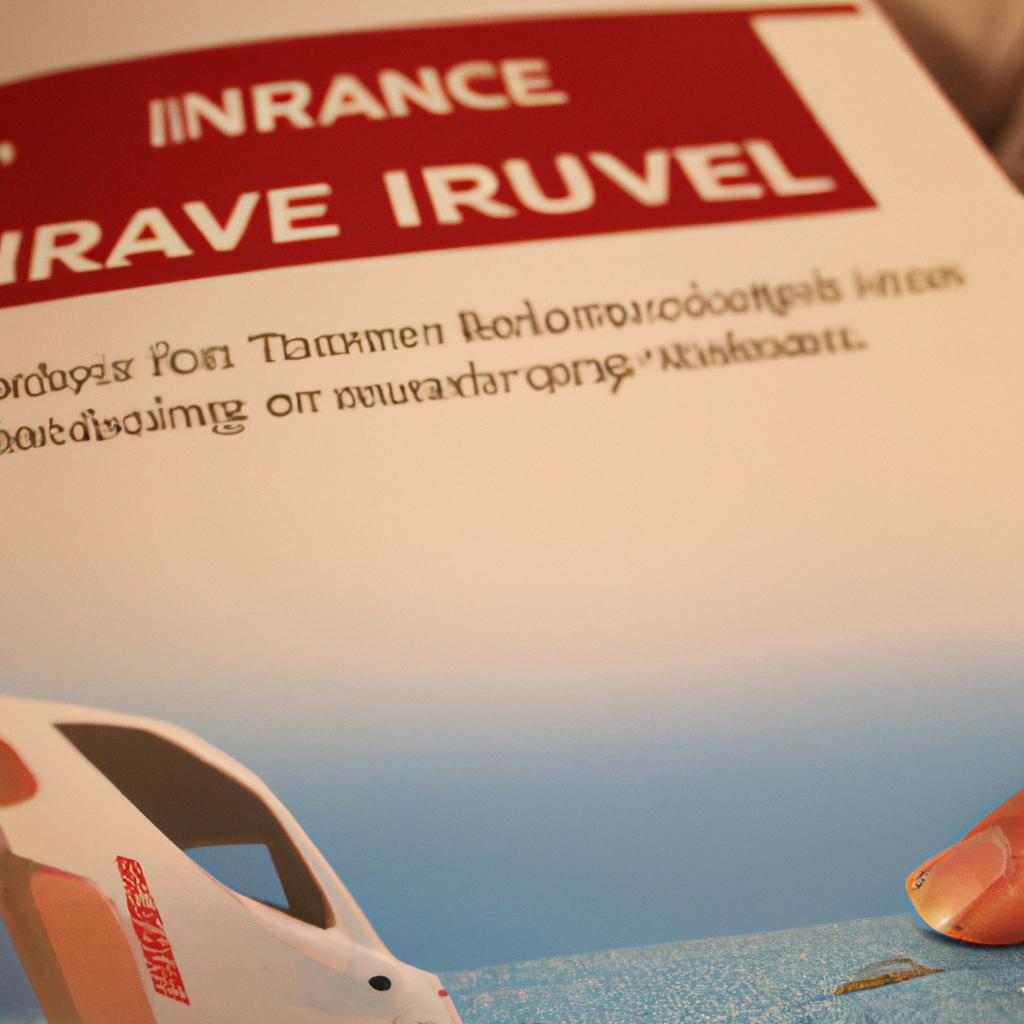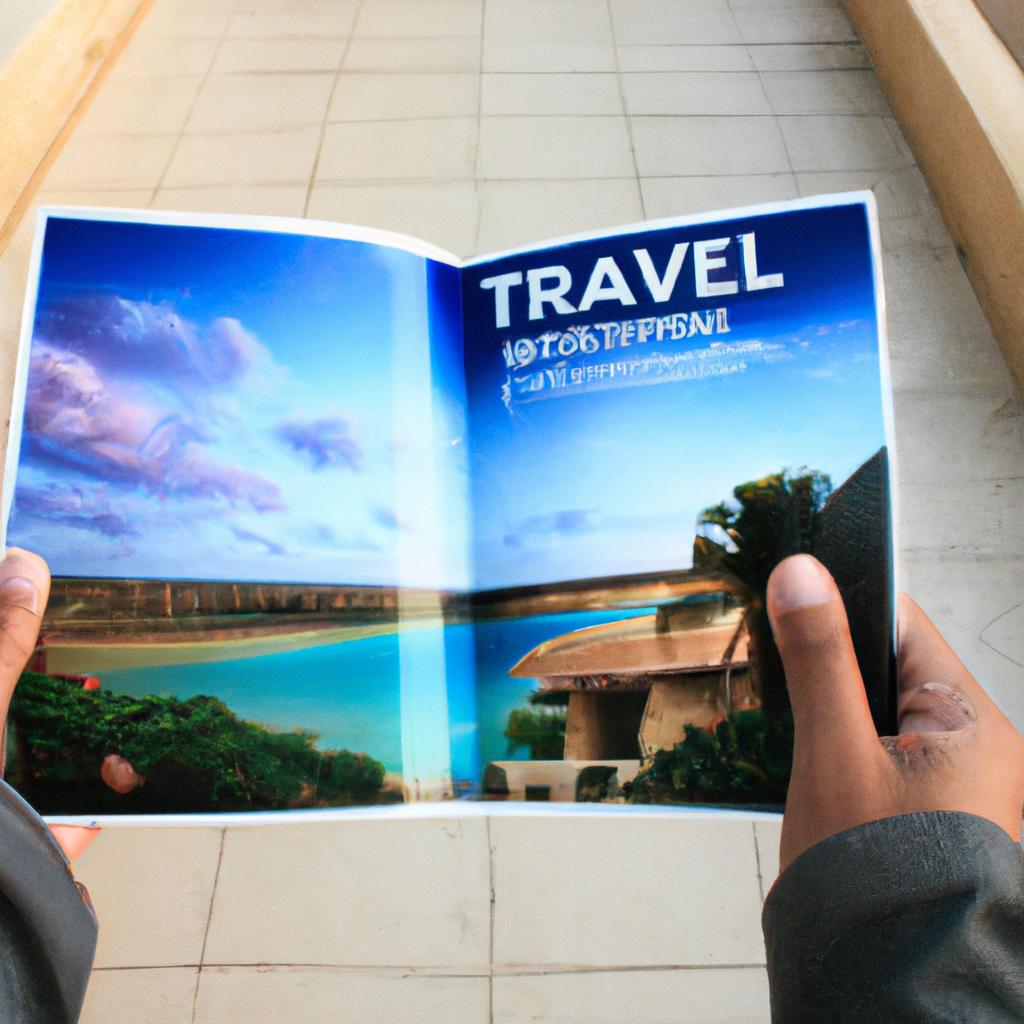Airline miles have become a popular form of travel financing in the realm of recreational travel. This article aims to explore the various benefits and advantages that airline miles offer, as well as their potential for unlocking affordable travel options. By examining the case study of an avid traveler who effectively utilized airline miles to finance multiple trips, we will delve into how this system can provide individuals with opportunities to explore new destinations while mitigating financial burdens.
In recent years, the concept of accumulating airline miles has gained significant traction among travelers seeking cost-effective ways to fund their leisure journeys. One illustrative example is the case of Sarah, an ardent globetrotter who managed to visit numerous countries within a limited budget by strategically leveraging her accumulated airline miles. Through meticulous planning and wise allocation of these rewards, she was able to offset a substantial portion of her airfare expenses, allowing her more flexibility in allocating funds towards accommodation and other travel-related costs. This case exemplifies how harnessing the power of airline miles can enable individuals like Sarah to embark on fulfilling adventures without being hindered by exorbitant transportation fees.
Understanding Airline Miles
Imagine this scenario: Sarah, a frequent traveler, wants to go on a dream vacation to Europe. However, the cost of flights and accommodations is beyond her budget. In her quest for affordable travel options, she discovers the world of airline miles – a system that allows travelers like herself to earn points towards future flights by making purchases with affiliated credit cards or through loyalty programs offered by airlines.
Airline miles have become an increasingly popular means of financing travel among recreational travelers. This section aims to provide a comprehensive understanding of how airline miles work and their significance in facilitating affordable travel experiences.
To begin with, let us consider some key features associated with airline miles:
- Flexibility: Unlike traditional methods of payment for airfare, airline miles offer flexibility in terms of when and where they can be redeemed. This gives travelers the freedom to choose destinations and dates based on their preferences rather than being restricted by financial constraints.
- Rewards System: Airlines typically employ a rewards system whereby customers accumulate mileage points based on the distance traveled or the amount spent on eligible purchases. These points can later be exchanged for discounted or even free flights.
- Partnerships: Most major airlines have partnerships with other companies such as hotels, car rental agencies, and retail stores. By utilizing these partnerships, travelers can earn additional miles by booking hotel stays, renting cars, or shopping at partner establishments.
- Elite Status: Many airlines also offer elite status tiers based on the number of miles flown within a specific timeframe. Elite members enjoy perks such as priority boarding, access to airport lounges, and bonus mile earnings.
In order to grasp the potential benefits of airline miles more effectively, let’s take a look at an illustrative example:
| Traveler | Accumulated Mileage (in Points) | Redeemed Flights |
|---|---|---|
| John | 50,000 | New York to Los Angeles |
| Sarah | 25,000 | London to Paris |
| David | 100,000 | Sydney to Tokyo |
The table above demonstrates how airline miles enable travelers like John, Sarah, and David to offset the cost of flights by redeeming their accumulated points. By doing so, they were able to embark on journeys that might have otherwise been financially burdensome.
In summary, understanding airline miles is crucial for individuals seeking affordable travel options. The flexibility, rewards system, partnerships, and potential for elite status make airline miles a valuable resource in financing recreational travel experiences.
[Transition sentence] Now let’s explore the mechanics behind earning and utilizing airline miles in greater detail as we dive into the subsequent section about “How Airline Miles Work.”
How Airline Miles Work
Unlocking the potential of airline miles for travel financing is becoming increasingly popular among leisure travelers. By understanding how airline miles work, individuals can maximize their benefits and enjoy cost-effective vacations. This section will delve deeper into the mechanics behind airline miles, shedding light on the various ways they can be earned and redeemed.
To illustrate this concept further, let’s consider a hypothetical scenario involving Sarah, an avid traveler who wants to plan a trip to Europe. Sarah has accumulated a significant number of airline miles through her frequent flights with a particular carrier. Instead of purchasing expensive plane tickets outright, she decides to utilize her miles to cover part of the fare. As a result, she significantly reduces her travel expenses and gains flexibility in choosing her preferred flight options.
Understanding how airline mile programs function is crucial for anyone interested in leveraging them as a form of travel financing. Here are some key points to keep in mind:
- Earning Miles: Airlines offer several avenues for earning miles, including flying with partner airlines, utilizing co-branded credit cards, booking hotel stays or car rentals through affiliated partners, and taking advantage of promotions or special offers.
- Redeeming Miles: Once accrued, airline miles can be redeemed for various rewards such as discounted or free flights, upgrades to business class or first class seats, access to airport lounges, hotel accommodations, car rentals, merchandise from participating retailers, and even charitable donations.
- Mileage Expiration: It is important to note that mileage expiration policies vary across different loyalty programs. Some airlines impose time limits within which miles must be used before they expire while others have no expiration dates at all. Being aware of these policies helps ensure that any accumulated miles do not go unused.
By referring to the table below, you can gain insight into how different airlines’ mileage redemption rates compare when it comes to specific destinations:
| Airline | Destination | Economy Class Redemption (Round Trip) | Business Class Redemption (Round Trip) |
|---|---|---|---|
| Airline A | Europe | 60,000 miles | 120,000 miles |
| Airline B | Europe | 80,000 miles | 150,000 miles |
| Airline C | Europe | 50,000 miles | 100,000 miles |
This table serves as a valuable resource for travelers seeking the best value when redeeming their airline miles. By comparing redemption rates across different airlines and destinations, individuals can make informed decisions that align with their travel goals.
In summary, understanding the mechanics of earning and redeeming airline miles is crucial for unlocking the potential of travel financing through these loyalty programs. By accumulating and strategically utilizing airline miles, travelers like Sarah can significantly reduce their expenses while enjoying enhanced flexibility in their vacation plans. In the subsequent section about “Earning Airline Miles,” we will explore various strategies to accumulate miles effectively without relying solely on flying.
Earning Airline Miles
Unlocking the potential of airline miles can significantly enhance one’s ability to finance recreational travel. By understanding how these miles work and strategically earning them, individuals can access a range of benefits that make their dream trips more attainable than ever before.
Consider the case of Sarah, who wanted to plan a vacation to Europe but was concerned about the high costs associated with airfare. However, by utilizing her accumulated airline miles, she was able to drastically reduce her expenses and turn her dream into reality. This example demonstrates the power of airline miles in making recreation travel more affordable and accessible.
To fully grasp how to leverage airline miles effectively, it is crucial to understand some key aspects of their functioning:
- Airline partnerships: Many airlines have entered into partnerships with other companies such as credit card issuers, hotel chains, and car rental agencies. These collaborations allow travelers to earn miles not only through flights but also from various everyday purchases.
- Mileage expiration policies: It is important to be aware of each airline’s policy regarding mileage expiration. Some programs may require regular account activity or impose time limits on when earned miles must be used.
- Redemption options: Airlines typically offer multiple redemption options for accrued miles, including free flights, upgrades, lounge access, and even merchandise or gift cards.
- Elite status benefits: Frequent flyers who achieve elite status within an airline’s loyalty program can enjoy additional perks like priority boarding, extra baggage allowance, and exclusive airport lounges.
These factors demonstrate the breadth of possibilities offered by airline mile programs. To further illustrate this point, consider the following table showcasing different ways in which individuals can utilize their accumulated miles:
| Redemption Option | Description | Emotional Response |
|---|---|---|
| Free Flight | Allows travelers to explore new destinations without cost | Excitement |
| Upgrade | Enhances comfort during air travel | Satisfaction |
| Lounge Access | Provides a luxurious and relaxing airport experience | Relaxation |
| Merchandise or Gift Cards | Offers flexibility in utilizing miles for various purposes | Delight |
In summary, by understanding the intricacies of airline mile programs, individuals can unlock numerous benefits that significantly enhance their ability to finance recreational travel. By leveraging partnerships with other companies, being mindful of expiration policies, exploring different redemption options, and aiming for elite status within loyalty programs, travelers can make the most out of their accumulated miles. The next section will delve into the process of redeeming these miles to further maximize their value in creating memorable travel experiences.
Redeeming Airline Miles
Section Title: Unlocking the Value of Airline Miles
Now, let’s delve into the exciting world of redeeming these accumulated miles for travel benefits and experiences. To illustrate the potential value of airline miles, consider the following example:.
Imagine a frequent traveler named Sarah who has diligently collected airline miles over several years using her credit card rewards program. On a hypothetical trip from New York to London, she decides to use her earned miles for a business class ticket instead of purchasing one outright. By doing so, Sarah saves approximately $5,000 on this flight alone while enjoying enhanced comfort and amenities.
Unlocking the full value of your hard-earned airline miles requires careful consideration and strategic planning. Here are some key points to keep in mind when redeeming your miles:
-
Flexibility is Key: Airlines often have limited availability for award tickets on popular routes or during peak travel seasons. Being flexible with your travel dates and destinations can significantly increase your chances of securing desirable flights using your miles.
-
Maximize Mileage Programs: Different airlines offer unique mileage programs with varying redemption rates, fees, and rules. Research the loyalty programs associated with your preferred airlines to identify opportunities for maximizing the value of your mile balance.
-
Combine Cash & Miles: Some airlines allow you to partially pay for flights using both cash and miles. This option can be particularly beneficial if you don’t have enough miles for a complete redemption but still want to enjoy discounted fares or upgraded cabin classes.
-
Explore Partner Networks: Many airlines belong to broader alliances or partnerships that extend their reach across multiple carriers worldwide. Take advantage of these networks by leveraging partner airlines’ award availability, enabling greater flexibility in choosing flights and destinations.
To further explore the intricacies of redeeming airline miles effectively, refer to the following table highlighting different factors that may impact your mileage redemption experience:
| Factors to Consider | Description |
|---|---|
| Award Availability | The likelihood of finding available award seats on desired flights and dates. |
| Redemption Fees | Additional charges or fees associated with booking award tickets, such as taxes or surcharges. |
| Mileage Expiration | The duration for which earned miles remain valid before expiring. It’s crucial to be aware of expiration policies to avoid losing accumulated miles. |
| Upgrade Opportunities | Some airlines offer the option to use miles for upgrades from economy class to premium cabins, providing a more comfortable travel experience. |
By understanding these factors and employing smart tactics, you can optimize the value of your airline miles while enjoying memorable trips at reduced costs.
Transitioning into our next section on “Tips for Maximizing Airline Miles,” let us now explore some practical strategies that will help you make the most out of your rewards programs and leverage them effectively towards future travels.
Tips for Maximizing Airline Miles
As we explored in the previous section, redeeming airline miles can be an excellent way to offset travel expenses and make your dream trips more affordable. Now, let’s dive deeper into some tips for maximizing the value of your accumulated miles.
To illustrate how effective this strategy can be, consider the case of Sarah, a frequent traveler who diligently collects airline miles through her credit card purchases and loyalty programs. By strategically planning her trips and leveraging her miles, she was able to take a luxurious vacation to Bali without spending a fortune out of pocket. This example demonstrates the potential that lies within effectively utilizing airline miles.
Here are some key strategies to help you unlock the true value of your airline miles:
-
Plan ahead and search for award availability: It’s essential to plan your travels well in advance and keep an eye out for airlines’ award seat availability. Certain times of the year may have higher demand, making it harder to find available seats using mileage rewards. By booking early or being flexible with your travel dates, you increase your chances of securing desired flights using miles.
-
Take advantage of partner airlines and alliances: Many airlines belong to global alliances or have partnerships with other carriers. These alliances allow you to use your accumulated miles on various airlines within their network, expanding your options when it comes to choosing destinations or flight routes. Be sure to explore these opportunities when redeeming your miles.
-
Upgrade or book premium cabin tickets: Another way to maximize the value of your airline miles is by upgrading from economy class to business or first class cabins, where possible. The difference in fares between classes can often be significant if purchased outright but can be bridged by using fewer additional points/miles for an upgrade instead.
-
Keep track of promotions and special offers: Airlines frequently run promotions offering bonus mileage earnings or discounted redemption rates on specific routes or during certain periods. Staying informed about these offers through airline newsletters, promotional emails, or loyalty program websites can help you get the most out of your miles.
To further illustrate how these strategies can be put into practice, consider the following table that compares the cost of a round-trip flight from New York to Paris using cash versus redeeming airline miles:
| Cash Price (in USD) | Miles Required | |
|---|---|---|
| Economy Class | $800 | 50,000 |
| Business Class | $3,500 | 100,000 |
As shown in this comparison, by redeeming 50,000 miles instead of spending $800 on an economy class ticket, travelers could save a significant amount. Moreover, if they decide to splurge on a business class experience and redeem 100,000 miles rather than paying $3,500 in cash for the same ticket type – it results in even greater savings.
In summary, unlocking the value of your accumulated airline miles requires strategic planning and knowledge of the available options. By staying proactive and making use of partnerships with other airlines or promotions offered by your chosen carrier(s), you can make travel more accessible and affordable.
[Next Section: The Future of Airline Miles]
The Future of Airline Miles
Maximizing Airline Miles: A Pathway to Affordable Travel
In the previous section, we explored various tips for maximizing airline miles and how they can help travelers save money on their recreational trips. Now, let’s delve further into the future of airline miles and how they have revolutionized travel financing.
Imagine a young couple planning their dream vacation to an exotic island destination. They are eager to embark on this adventure but worry about the financial burden it might impose. However, with the right knowledge and strategic use of airline miles, they can turn their dreams into reality without breaking the bank.
To better understand how travelers can maximize airline miles for affordable travel, consider these key strategies:
-
Airline Credit Cards: Many airlines offer co-branded credit cards that allow users to earn bonus miles for everyday purchases. By utilizing these cards wisely, individuals can accumulate significant mileage rewards over time.
-
Strategic Redemption: The savvy traveler knows that timing is everything when redeeming airline miles. Booking flights during off-peak seasons or being flexible with travel dates can result in substantial savings.
-
Partnerships and Alliances: Airlines often form partnerships and alliances with other companies such as hotels, car rental agencies, and retail brands. Taking advantage of these collaborations allows travelers to earn additional miles through various transactions beyond just booking flights.
-
Mileage Transfer Opportunities: Some airlines provide options to transfer accumulated miles between frequent flyer programs or even share them with family members or friends. This flexibility enables individuals to pool resources and unlock greater possibilities for discounted airfare.
Now let us explore some real-life scenarios showcasing the potential benefits of maximizing airline miles:
| Scenario | Regular Cost (USD) | Mileage Redemption Cost (USD) | Savings |
|---|---|---|---|
| Round-trip flight within continental US | $500 | 25,000 | $475 |
| International round-trip flight | $1,200 | 60,000 | $1,140 |
| Business class upgrade for transatlantic flight | $2,500 | 50,000 + $600 | $1,900 |
As demonstrated by these examples, the savings made possible through strategic use of airline miles can significantly reduce travel expenses and open up opportunities that may have otherwise been financially unattainable.
In conclusion, as travelers become more aware of the value inherent in their accumulated airline miles, they will continue to seek ways to maximize their potential. By employing a combination of credit card rewards programs, strategic redemptions, leveraging partnerships and alliances, and exploring mileage transfer options, individuals can unlock affordable travel financing while still enjoying enriching recreational experiences. With this knowledge in hand and an understanding of how to navigate the evolving landscape of airline miles, adventurers can embark on memorable journeys without sacrificing financial stability or breaking the bank.











